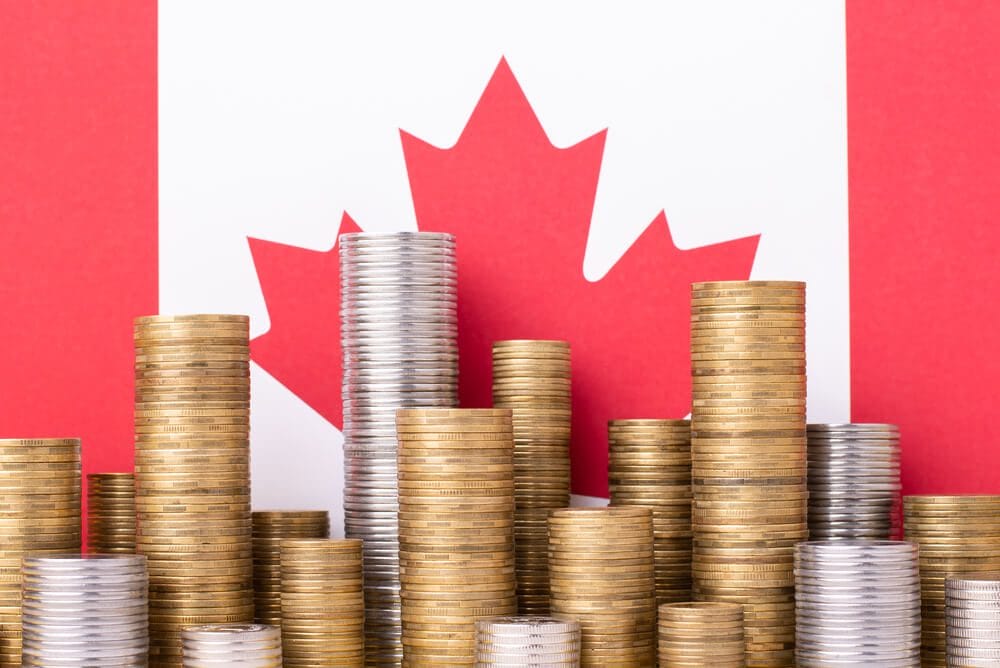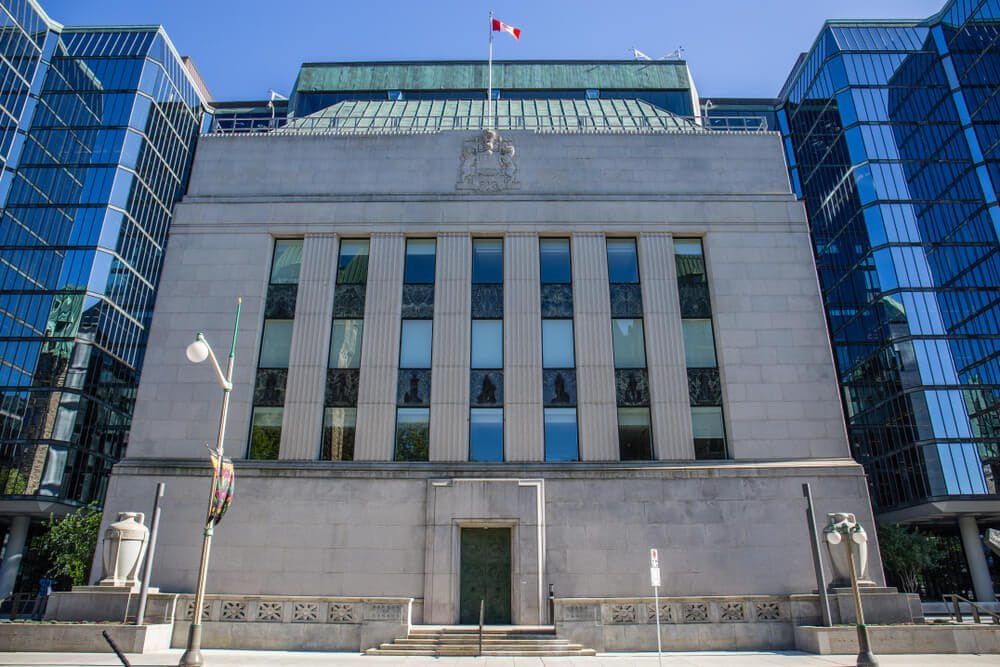The Bank of Canada is the country’s central bank, and the Bank of Canada Act was the legislation that led to its creation (1934). It was established in the midst of the Great Depression with the intention of controlling both credit and money. The banking institution opened its doors for business on March 11, 1935.
Not only does it fulfill the role of fiscal agent for the government of Canada, but it also possesses the exclusive power to issue paper money. The Canadian Ministry of Finance is ultimately responsible for directing the bank, and the Receiver General of Canada receives all of the income that the bank generates.
Historical Events That Created the BOC
The Bank of Canada has played a major role in serving Canada throughout history since it was established. Let’s look at some of its major milestones over the years which led to the creation of this central bank that we know today. They are as follows:
In the 1930s
When it first opened its doors in March of 1935, the Bank of Canada was located in a rented space in the Victoria Building on Wellington Street in the capital city of Ottawa. In December of 1936, the architects sent the committee their final sketches of the elevations of the building. The first shovelful of dirt was turned over in 1937.
The Piggott Construction Company, based in Hamilton, Ontario, served as the project’s primary contractor. Piggott Construction Company recruited subcontractors from around Ottawa, southern Ontario, and Quebec. Construction moved along at a brisk pace, and there were no unwarranted delays or cost overruns. By the 10th of August, the construction had progressed to the point that Prime Minister King and Governor Towers could participate in the ceremonial laying of the cornerstone together.
I940s-1960s
The bank outgrew its brand new premises quite quickly. By 1946, the personnel was being accommodated in temporary facilities all around the downtown area of Ottawa, and the administration of the Bank commissioned Morris to produce plans for repairs to the existing building. These plans were never put into action. In the 1950s, the bank once more went to Morris for recommendations on extensive expansions to the structure. However, these designs, along with the others, were ultimately rejected.
In 1963, the Bank of Canada made public an announcement regarding a competition in which a select group of Canadian architects would be asked to submit ideas for the expansion of the existing structure. The ambitions of the Bank, on the other hand, were shelved almost immediately. In the 1960s, Ottawa was in the midst of an unprecedented building boom, and it became apparent to the executive of the Bank that the scale of their planned expansion would place undue pressure on the already overburdened construction industry. In addition, the Bank’s planned expansion would place an undue burden on the city’s infrastructure.
1970 onwards
Late in the 1960s, when the Bank was finally in a position to start construction, it was determined that a new design should be commissioned. 1972 marked the beginning of construction, which lasted throughout the whole decade. 1979 marked the year when construction of the building was finally finished, and by 1980, the whole workforce had moved in. The headquarters of the Bank of Canada continues to be one of the most recognizably Canadian and aesthetically significant buildings in Ottawa.
In 2012, the bank took the first official steps toward formalizing a proposal to upgrade its headquarters. Since the construction of the two glass office towers in the 1970s, the Bank’s Head Office Renewal project was the greatest infrastructure project it has undertaken. The renovation of the Head Office was finished by the end of 2016, and staff moved back into the facility at the beginning of 2017.
Role of the Bank of Canada
Most of us are unaware of how important these financial institutions are around the globe. They are accountable for their respective nations’ economic situations, and the people rely on them to keep the country from going into default or an economic crisis. Similarly, the Bank of Canada plays an important role in the country’s present economic status. This is due to the following factors:
Inflation Control
Inflation is a major crisis that takes over several countries like a disease. It is just like the COVID-19 virus as it doesn’t stop in just one country, it takes over several countries altogether. As always like in the past, whenever inflation took over a single country, most of the countries in the vicinity were impacted as well. This is because inflation occurs due to a major economic crisis. This type of crisis usually impacts more than one country simply because it has no choice. Trade routes are impacted and international flights become at a stand-still. A rate of inflation that is both low and stable is necessary for an economy to be considered healthy.
The annual percentage increase in general prices that should be allowed in Canada is predetermined by the government as the maximum allowable increase. The Bank of Canada is responsible for ensuring that inflation remains within the desired range. It would be beneficial to have a little bit of inflation. However, rates of inflation that are both high and erratic can be destructive. When prices are difficult to foresee, it is difficult for individuals to plan how much money they can spend, save, or invest in the future. In the worst-case scenario, severe and fluctuating inflation can bring about the collapse of an economy.
Monetary Policies
The Bank of Canada consistently releases monetary policies in accordance with the current financial situation in the country. The Monetary Policy Committee (MPC), which consists of nine members, is responsible for determining the policy regarding interest rates. The Governor of the Bank of Canada maintains control over the Monetary Policy Committee (MPC), which is a position held by a member of the public who is also employed by the Bank of Canada in a professional capacity. In addition to the Bank of Canada’s top economist, the committee is comprised of the three deputy governors responsible for monetary policy, financial stability, and markets and policy respectively.
The Chancellor of the Exchequer is an important figure who is comparable to the Secretary of the Treasury in the United States and is the one who makes the appointments for the remaining four members of the committee. The Monetary Policy Committee gets together on a regular basis (eight times a year) to discuss whether or not the monetary policy should be altered in order to fulfill the inflation target set by the government. Every person on the committee has one vote, and reaching a decision that everyone agrees on is not necessary. The Bank of Canada is responsible for adjusting the bank rate which is also often known as the rate that is charged to domestic banks.
Economical Information
One of the best places to get information about the economic situation of any given country is from the central bank controlling the economic decisions of the country. This is because they are the ones making these decisions so you can only get the most accurate information from them. We really recommend you avoid getting this information from magazines and another non-financial sites as they usually twist the words to exaggerate them for views and ratings. They are not a reliable source of information. Almost all central banks have a press release section where they release this information and it would be best to check this section regularly in order to be up to date on the economic situation of the country. If your central bank does not give out this information on their website it would be best to reach out to them to see where would be the best place to receive it instead.
How the BOC Impacts the Canadian Dollar Market
The Bank of Canada has a direct influence on the Canadian dollar market in the FX sector. This is because the Canadian dollar is Canada’s national currency, and the Bank of Canada is the country’s central bank. As a result, any major announcements, pronouncements, or updates from this central bank will have a significant influence on the pound markets. And this has actually happened on countless occasions. Almost every time the BOC issues a significant announcement, the CAD markets either fall or surge. The following are some of the most significant things to keep an eye out for from the Bank of Canada:
Interest Rate Decisions
The Bank of Canada regularly updates its interest rates. This is especially the case if the country is going through major economic turmoil. You should know that every bank tries to keep its interest rates as low as possible. This is to prevent the economy from collapsing into a recession. However, there are situations where the bank has no choice but to increase its interest rates. This is especially true when the country is suffering majorly from an inflation crisis.
During such a crisis, the bank has no choice but to increase its interest rates in order to bring inflation under control. Whenever the Bank of Canada is set to release its interest rate decision, the Pound markets become super volatile. This is in anticipation of the decision to come. However, after the decision is made, the market can be very unpredictable. If the interest rate decision was positive, the Pound may enter bullish markets. However, if it was negative, the Pound may enter bearish markets.
Member Speeches
The Bank of Canada holds speeches as regularly as at least twice a week. This is to update the public on the current scenario in the financial work and how the BOC plans to fit into the discussion. Although anyone’s speech can be pretty important since you never know what could be revealed, the speeches of the president, chairman, and governors are a bit more important than the rest. It should be noted though that these influential members usually don’t reveal any key financial data that may be useful for us to navigate through the financial world. They usually like to stay neutral unless it is in the best interest of the country not to do so. These member speeches are crucial in determining the market movement of the Pound. If your economic calendar reveals a BOC member speech coming up, it’s best to play your cards wisely.
Statistical Releases
Aside from its regular releases of statements and monetary decisions, the Bank of Canada also occasionally releases some statistical data as well. I find this to be super useful in maintaining a trusting relationship with its stakeholders. Without the statistical data, we would just have to believe what they are saying in their speeches and we’d also have to believe their reasoning behind updating their monetary policies. This statistical data really helps put money where their mouth is and helps us understand why exactly each situation occurred and what the Bank of Canada did to impact this situation as well. If the statistical data reveals a positive scenario within the BOC, the CAD markets will most probably be bullish and be in bullish markets. However, if there is no press release. The market will adjust itself according to your weight.
Meeting Minutes
Usually, a couple of days or weeks after making a big decision, the Bank of Canada releases its Meeting Minutes which is basically a recording of the discussion that took place between BOC members when they were deciding the decision that was to be made. This is super important in understanding who is on whose side and why exactly they made the decision that they did. Usually, after the release of the interest rate or any other monetary policy decision, we get to hear the meeting minutes and it helps us understand the reasoning behind the decision they made. This has a big impact on the CAD markets. Depending on the result that was released, whether it was positive or negative, the CAD currency will become quite unstable.
Check how the top central banks in the world are dominating the forex market.
Forex signals are a great way to get profitable trades, even if you don’t know how to analyze chart patterns yet. Expert analysts will provide you with appropriate risk management strategies, so you don’t make the top forex mistakes like every trader. Don’t trade all the time. Trade only at the best trade set up with Forex GDP.




